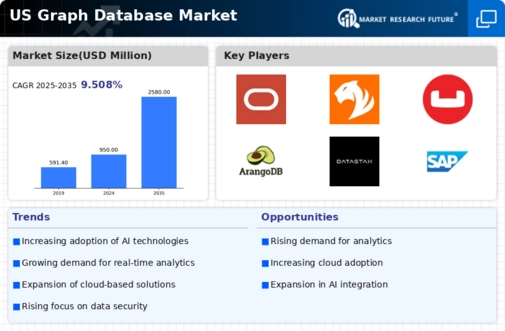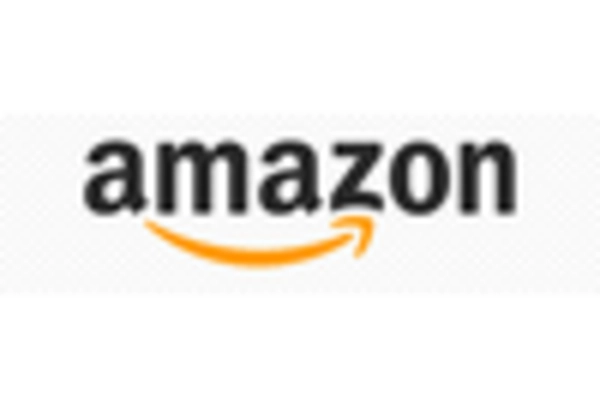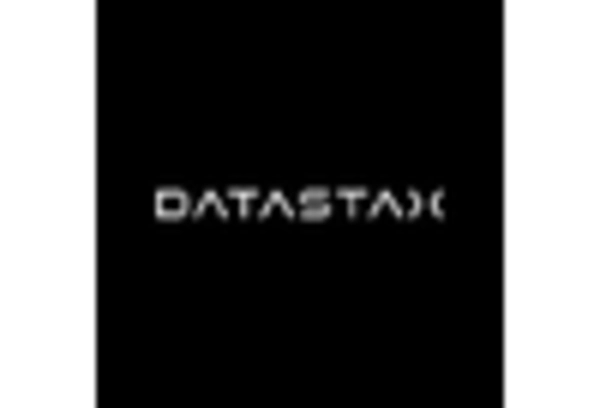Expansion of Cloud-Based Solutions
The graph database market is benefiting from the rapid expansion of cloud-based solutions. As organizations migrate to cloud environments, the demand for scalable and flexible database solutions is increasing. Graph databases, with their ability to handle complex queries and relationships, are well-suited for cloud deployment. Recent data indicates that the cloud database market is projected to grow to $100 billion by 2025, with graph databases capturing a notable share. This trend suggests that as more businesses adopt cloud strategies, the graph database market will likely see accelerated growth, driven by the need for efficient data management in cloud infrastructures.
Increased Demand for Data Connectivity
The graph database market is experiencing heightened demand for data connectivity solutions. Organizations are increasingly recognizing the value of interconnected data, which allows for more insightful analytics and decision-making. This trend is particularly evident in sectors such as finance and healthcare, where complex relationships between data points are crucial. According to recent estimates, the market is projected to grow at a CAGR of approximately 25% over the next five years, driven by the need for efficient data management. As businesses seek to leverage their data assets, the graph database market is positioned to play a pivotal role in facilitating seamless data integration and connectivity.
Growing Need for Enhanced Data Security
In the current landscape, the graph database market is witnessing a surge in demand for enhanced data security measures. As organizations face increasing threats from cyberattacks, the ability to secure complex data relationships becomes paramount. Graph databases offer unique advantages in this regard, enabling organizations to implement robust security protocols that protect sensitive information. The market for data security solutions is expected to reach $200 billion by 2026, with a significant portion attributed to graph database technologies. This growing emphasis on security is likely to drive innovation and investment within the graph database market, as companies prioritize safeguarding their data assets.
Demand for Improved Customer Experience Solutions
The graph database market is witnessing a growing demand for improved customer experience solutions. Organizations are increasingly focused on understanding customer behavior and preferences, which requires sophisticated data analysis capabilities. Graph databases enable businesses to analyze complex customer interactions and relationships, leading to more personalized services. Recent studies suggest that companies investing in customer experience technologies can see revenue increases of up to 10%. This trend highlights the potential for the graph database market to support organizations in enhancing customer engagement and satisfaction, ultimately driving growth in the industry.
Rising Interest in Artificial Intelligence Applications
The graph database market is increasingly influenced by the rising interest in artificial intelligence (AI) applications. Organizations are leveraging graph databases to enhance AI capabilities, particularly in areas such as machine learning and natural language processing. The ability to model complex relationships within data sets allows for more accurate predictions and insights. As AI technologies continue to evolve, the graph database market is expected to grow significantly, with estimates suggesting a potential increase of 30% in market size by 2027. This intersection of AI and graph databases indicates a promising future for the industry, as businesses seek to harness the power of data-driven decision-making.

















Leave a Comment